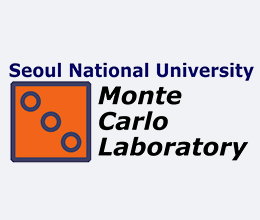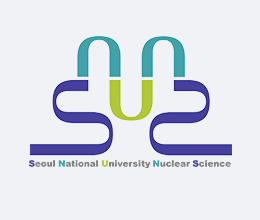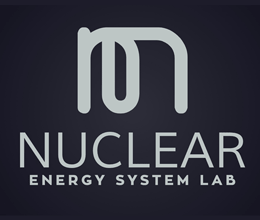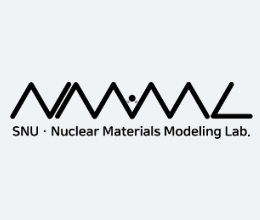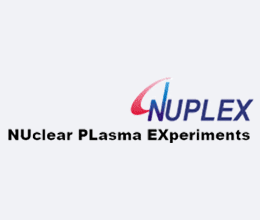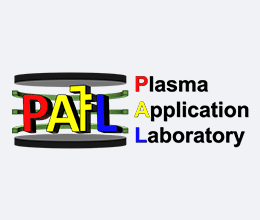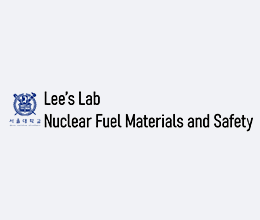3 Dimensional Stellarator & Tokamak Laboratory
- · Professor : Jong-Kyu Park
- · Phone : 02-880-7120
- · Location : 36-304
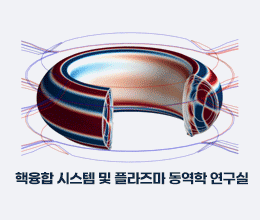
The 3D Stellarator and Tokamak (3DST) Laboratory is dedicated to developing optimized solutions for magnetically confined fusion systems. To achieve this, the lab focuses on advancing theoretical models and computational frameworks across multiple scales to establish a validated integrated predictive model. The newly developed modeling framework incorporates 3D constraints and boundary conditions, enabling system-level analysis and prediction across diverse scales—from large, fast magnetohydrodynamic (MHD) instabilities to small-scale kinetic transport and turbulence phenomena. Currently, the lab is enhancing 3D plasma equilibrium models by integrating kinetic effects and drift-MHD modeling. This research aims to develop novel methodologies for simultaneously predicting key instabilities—interchange, locking, tearing, peeling, and ballooning modes—along with their associated transport behaviors in toroidal magnetic confinement systems. To validate predictions and implement adaptive control strategies, the lab collaborates closely with domestic and international fusion institutions. By leveraging these predictive and control capabilities, the 3DST Laboratory seeks to optimize fusion system configurations and scenarios, ultimately driving the development of innovative integrated solutions that enhance the performance and reliability of future fusion reactors.
Plasma Laboratory for Advanced REsearch
- · Professor : Yong-Su Na
- · Phone : 02-880-8336
- · Location : 30-103 / 30-104
- · Homepage : http://fusma.snu.ac.kr/plare/
Plasma Laboratory for Advanced Research conducts research to sustain stable and continuous fusion reactions in tokamak fusion reactors. The laboratory develops tokamak operation scenarios and performs integrated computational simulation analyses to achieve high-performance plasma in devices such as VEST and KSTAR. The laboratory also focuses on plasma control technology and the design of next-generation fusion devices using a virtual tokamak simulator. In addition, the laboratory explores various fusion-related topics, including plasma discharge, transport, instabilities, heating, and current drive, in an integrated manner. Furthermore, the laboratory collaborates with the Korea Institute of Fusion Energy as well as leading fusion research groups worldwide on joint research projects.
Monte Carlo Laboratory
- · Professor : Hyung Jin Shim
- · Phone : 02-880-7203
- · Location : 36-206
- · Homepage : http://mcl.snu.ac.kr
Monte Carlo Lab is conducting developments of neutron transport analysis codes, advanced reactor designs, research reactor analyses. The lab has developed a Monte Carlo neutron transport analysis code, McCARD. Using McCARD, it has performed neutron transport analyses for various reactor types including pressurized water reactors, fast reactor, high-temperature gas cooled reactors, molten salt reactors, research reactors. The lab is developing a GPU-enhanced McCARD version, McCARD/G for the advanced reactor design and analysis, deterministic load-following methodologies, PINN-based core analysis methods, power planning code, addressing a wide range of issues.
Seoul National University Nuclear Science Group
- · Professor : Geehyun Kim
- · Phone : 02-880-7214
- · Location : 31-113 / 31-114 / 31-115
- · Homepage : http://snuns.snu.ac.kr
A vast span of nuclear science and technology utilizing radiation, including extensive areas in medical and industrial application, nuclear security and safeguards, as well as basic science research, is crucially based upon instrumentation technique. The primary focus of our research group is oriented to the development of nuclear instrumentation techniques and their interdisciplinary applications for synergistic effect. Main areas of interest include: (a) Radiation Detector and Detection Methods Development, (b) Nuclear Safeguards and Non-proliferation, (c) Radiation Protection and Dose Assessment, and (d) Exploration Techniques on Earth and Space Missions. Specifically, the following keywords could represent the current stream of our research work — Nanomaterial-based Detectors, Activation Analysis, Neutron Measurement, Neutron Generators, Radiation Imaging, Well-logging, and Nuclear Materials Characterization.
Radiation Bioengineering Laboratory
- · Professor : Eunhee Kim
- · Phone : 02-880-7208
- · Location : 31-118 / 31-414 / 31-414-1
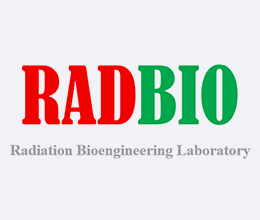
The Radiation Bioengineering Laboratory (RadBio Lab) conducts education of human resources and development of engineering technologies in the field of radiation/radiological protection, which is responsible for ensuring the safety of the human body from radiation hazards. Technical elements of research include (1) design and production of irradiation devices, (2) experiment design testing the cellular response to radiation, (3) computer simulation of the physical phenomena in radiation interaction with biological targets, and (4) mathematical modeling of the relationship between radiation exposure and harm to the human body. RadBio Lab has a research infrastructure including a self-designed hard X-ray irradiation facility, a self-made cell exposure system with alpha particles, and bio-test laboratory. Research achievements include (1) development of a skin cancer treatment protocol using nano-gold particles, (2) data production and utility analysis of plasma for medical use, (3) advancement of industrial use of radiation under safety management, and (4) development of an algorithm for quantifying DNA damage under diverse situation of radiation exposure. The on-going research items list (1) bio-response scpecific to low-dose radiation exposure, (2) dependence of DNA damage on radiation property, (3) quantitative interpretation of DNA damage distribution and cell killing from radiation exposure, and (4) optimization strategy of radiation treatment. RadBio Lab currently focuses on the project regarding ‘machine learning-based assessment of biological impact of radiation by integrating large-scale biological experiment data and Monte Carlo simulation data of radiation interation with human body.’
Nuclear Thermal-Hydraulic Engineering Laboratory
- · Professor : Hyung Kyu Cho
- · Phone : 02-880-8978
- · Location : 31-205 / 31-207 / 31-210 / 31-1-1 / 131-108
- · Homepage : https://nuthel.com
Nuclear Thermal-Hydraulic Engineering Laboratory researches the thermal-hydraulic phenomena occurring in nuclear power systems to ensure the safe utilization of nuclear energy. To enhance the safety and reliability of nuclear systems, we conduct high-fidelity experiments, two-phase flow simulations using high-performance computing, and multiphysics analysis in cooperation with the neutronics and materials science fields. Based on these analytical and experimental technologies, we are conducting research not only on the safety of light water reactors but also on advanced nuclear systems, such as floating reactors and heat pipe reactors.
Nuclear Energy System Laboratory
- · Professor : Eung Soo Kim
- · Phone : 02-880-7209
- · Location : 31-105
- · Homepage : https://snueslab.com
The Nuclear Energy System Laboratory (ESLAB) is conducting various research using the innovative engineering technology to overcome the challenges of nuclear systems and safety. The ESLAB is developing advanced modeling/simulation technology and computational analysis solutions to address various issues related to nuclear systems & safety using computational science and high-performance computing. Additionally, The ESLAB are conducting various research and developing key technologies related to the future nuclear systems and their applications through creative ideas.
Reactor Physics Laboratory
- · Professor : Han Gyu Joo
- · Phone : 02-880-7211
- · Location : 36-207
- · Homepage : http://neutron.snu.ac.kr/
The Reactor Physics Laboratory focuses on research in reactor physics analysis, dealing with various physical phenomena that affect neutron behavior within a reactor, which plays a key role in nuclear power generation. Using the whole-core transport analysis code nTRACER, the laboratory has conducted analyses of various real pressurized water reactors and has also applied the code to analyze fast reactor cores.
Subsequently, by incorporating GPU-accelerated high-performance computing, the laboratory has developed various analysis codes, including the pin-wise core analysis code VANGARD and the continuous-energy Monte Carlo analysis code PRAGMA, alongside nTRACER, to conduct a wide range of research projects.
Recent studies extend beyond pressurized water reactors to include multi-physics coupled analysis of advanced reactor models. A notable example is the research on the PRAGMA-OpenFOAM-ANLHTP coupled analysis framework for heat pipe reactor analysis.
Subsequently, by incorporating GPU-accelerated high-performance computing, the laboratory has developed various analysis codes, including the pin-wise core analysis code VANGARD and the continuous-energy Monte Carlo analysis code PRAGMA, alongside nTRACER, to conduct a wide range of research projects.
Recent studies extend beyond pressurized water reactors to include multi-physics coupled analysis of advanced reactor models. A notable example is the research on the PRAGMA-OpenFOAM-ANLHTP coupled analysis framework for heat pipe reactor analysis.
Nuclear materials Modeling Laboratory
- · Professor : Takuji Oda
- · Phone : 02-880-7207
- · Location : 31-1-404
- · Homepage : https://sites.google.com/snu.ac.kr/snu-nmml/
The Nuclear Materials Modeling Laboratory (NMML) studies nuclear materials using computational simulations such as molecular dynamics and first-principles calculations, which can analyze the motion of atoms, and theoretical methods such as thermodynamics and kinetics. (1) To enhance the safety and economics of using liquid metals and molten salts as coolants in fast reactors and tritium breeding materials in fusion reactors, it is necessary to suppress material corrosion and fire caused by high chemical reactivity. We apply computational simulations and theories to accurately evaluate the chemical reactivity and develop a method to effectively control the factors that determine the reactivity of these liquid materials, as well as discover new liquid materials through a materials informatics approach that integrates atomistic simulations and machine learning methods. (2) Tritium, a hydrogen isotope and the fuel for nuclear fusion reactors, is radioactive and rarely found in nature. Therefore, to realize a safe and economical nuclear fusion reactor, we need to thoroughly understand and control the behavior of tritium in various nuclear fusion reactor materials. We are addressing this issue by combining atomistic simulations and experiments performed through national and international collaborations. (3) Nuclear materials are exposed to energetic particles such as fast neutrons, which create a variety of defects and degrade the performance of the material through complex reactions that do not occur under normal conditions. By combining atomic simulations and machine learning techniques, we are building an accurate radiation damage prediction model.
Plasma, Radiation & Ion Sources Laboratory
- · Professor : Kyoung-Jae Chung
- · Phone : 02-880-8337
- · Location : 31-108 / 31-112 / 31-405
- · Homepage : https://snupi.snu.ac.kr/
Plasma is one of the four fundamental states of matter. It contains a significant portion of charged particles – ions and/or electrons. The presence of these charged particles is what primarily sets plasma apart from the other fundamental states of matter. We are investigating physics and applications of non-magnetized or partially magnetized non-equilibrium plasmas, which are widely used in semiconductor fabrications.
Pulsed power is the science and technology of accumulating energy over a relatively long period of time and releasing it very quickly, thus increasing the instantaneous power. It can generate high energy density plasmas (HEDP) radiating strong X-rays or shock waves, enabling us to investigate extreme state of matter. Our research covers from fundamental physics of hot or warm dense matter (WDM) to applications of pulsed power technology to industrial and environmental fields such as water well cleaning and rock blasting.
An ion source is a device that creates atomic and molecular ions utilized for various applications such as particle accelerators, neutron generators, ion implanters, and ion engines. Our research focuses on the efficient generation of high-density plasmas and extraction of positive or negative ions from them. Currently, we are developing various ion sources ranging from conventional DC arc sources to RF and MW sources for the utilization to semiconductor manufacturing, nano-fabrication, space propulsion, and D-D neutron generation.
Pulsed power is the science and technology of accumulating energy over a relatively long period of time and releasing it very quickly, thus increasing the instantaneous power. It can generate high energy density plasmas (HEDP) radiating strong X-rays or shock waves, enabling us to investigate extreme state of matter. Our research covers from fundamental physics of hot or warm dense matter (WDM) to applications of pulsed power technology to industrial and environmental fields such as water well cleaning and rock blasting.
An ion source is a device that creates atomic and molecular ions utilized for various applications such as particle accelerators, neutron generators, ion implanters, and ion engines. Our research focuses on the efficient generation of high-density plasmas and extraction of positive or negative ions from them. Currently, we are developing various ion sources ranging from conventional DC arc sources to RF and MW sources for the utilization to semiconductor manufacturing, nano-fabrication, space propulsion, and D-D neutron generation.
Seoul National University Plasma & Ion Beam Laboratory
- · Professor : Yong-Seok Hwang
- · Phone : 02-880-4337
- · Location : 31-102 / 31-117 / 31-121
- · Homepage : http://nuplex.snu.ac.kr
The Plasma & Ion Beam Laboratory has built and operates the Versatile Experiment Spherical Torus (VEST), the only experimental spherical tokamak in Korea. Through actual fusion plasma experiments using the VEST, we are conducting research on all aspects of fusion plasma, including plasma discharge, heating, diagnosis, control, and disruption, with the ultimate goal of realizing fusion power as a viable energy source for the future.
In particular, we have developed an effective plasma discharge scenario using a Trapped Particle Configuration (TPC) magnetic structure and successfully installed and operated a Neutral Beam Injection (NBI) heating system, which is widely used for heating fusion plasma. In addition, we are developing and upgrading various diagnostic instruments such as magnetic diagnostics, Thomson scattering diagnostics, interferometers, photonic phase and neutral pressure gauges to measure various parameters of the fusion plasma, and developing fusion plasma equilibrium and prediction codes based on these data to conduct research on plasma control and decay mechanisms.
Based on these studies, we are working with the simulation team to solve challenging problems in fusion reactors, such as stable operation and plasma instability analysis. We also plan to build a virtual fusion reactor that can operate a high-performance spherical tokamak using artificial intelligence techniques, with the ultimate goal of realizing fusion power generation.
In particular, we have developed an effective plasma discharge scenario using a Trapped Particle Configuration (TPC) magnetic structure and successfully installed and operated a Neutral Beam Injection (NBI) heating system, which is widely used for heating fusion plasma. In addition, we are developing and upgrading various diagnostic instruments such as magnetic diagnostics, Thomson scattering diagnostics, interferometers, photonic phase and neutral pressure gauges to measure various parameters of the fusion plasma, and developing fusion plasma equilibrium and prediction codes based on these data to conduct research on plasma control and decay mechanisms.
Based on these studies, we are working with the simulation team to solve challenging problems in fusion reactors, such as stable operation and plasma instability analysis. We also plan to build a virtual fusion reactor that can operate a high-performance spherical tokamak using artificial intelligence techniques, with the ultimate goal of realizing fusion power generation.
Plasma Application Laboratory
- · Professor : Gon-Ho Kim
- · Phone : 02-880-8971
- · Location : 30-101 / 30-102 / 30-119 / 31-104 / 31-105
- · Homepage : http://pal.snu.ac.kr
The Plasma Applications Laboratory focuses on engineering and industrial applications of low-temperature plasma.
In semiconductor and display manufacturing, atomic-scale precision process control is essential, with most processes relying on low-temperature plasma. The lab studies the physics of low-temperature plasma and develops precise process control technologies to enhance manufacturing efficiency.
To improve process yield, the lab integrates plasma and process data to develop an Advanced Process Control (APC) algorithm. This algorithm is implemented in actual process equipment, allowing real-world validation and continuous refinement.
The lab also works to transform conventional plasma control technologies—once used heuristically due to their complexity—into explainable and systematic control methods. This shift enhances process predictability, reliability, and optimization.
Through these efforts, the lab actively leads advancements in both low-temperature plasma research and the broader field of industrial plasma engineering.
In semiconductor and display manufacturing, atomic-scale precision process control is essential, with most processes relying on low-temperature plasma. The lab studies the physics of low-temperature plasma and develops precise process control technologies to enhance manufacturing efficiency.
To improve process yield, the lab integrates plasma and process data to develop an Advanced Process Control (APC) algorithm. This algorithm is implemented in actual process equipment, allowing real-world validation and continuous refinement.
The lab also works to transform conventional plasma control technologies—once used heuristically due to their complexity—into explainable and systematic control methods. This shift enhances process predictability, reliability, and optimization.
Through these efforts, the lab actively leads advancements in both low-temperature plasma research and the broader field of industrial plasma engineering.
Nuclear Fuel Materials and Safety Laboratory
- · Professor : Youho Lee
- · Phone : 02-880-8281
- · Location : 31-1-1 / 31-1-402 / 31-1-402B
- · Homepage : https://fuel.snu.ac.kr/
Our research is dedicated to solving the most important challenges of fission reactor technology through a system-oriented approach to nuclear fuel materials. Nuclear fuel engineering is not only fundamental to the advancement of nuclear reactor technology but also crucial in determining the pace of innovation in nuclear power. However, the complexities of fuel material behavior, coupled with the high demands placed on its performance predictability, often serve as the bottleneck for realizing advanced nuclear reactors. We address this challenge through a holistic approach. By integrating material science and engineering with reactor engineering, utilizing both experimental and computational methods, we demonstrate a unique and highly effective research approach tailored to address the pressing challenges of nuclear reactor technology today. Our multidisciplinary expertise, combined with a solid understanding of nuclear fuel materials, enables us to extrapolate reactor-scale implications and define technological directions from microscopic material behavior.
Nuclear Fuel Cycle and Nonproliferation Laboratory
- · Professor : Sungyeol Choi
- · Phone : 02-880-7217
- · Location : 36-304, 36-306 / 32-109, 36-305
- · Homepage : https://www.snunfc.com/
Here at Seoul National University's Nuclear Fuel Cycle and Nuclear Non-Proliferation Laboratory (SNUNFC) we stand at the forefront of academic-led Next-Generation Nuclear Energy and Waste Management Research & Development.
Across a range of topics covering the entire nuclear fuel cycle SNUNFC strides to push the boundaries of recycling, storage and disposal of spent nuclear fuel technologies; develop cutting edge technological solutions to chemical and material degradation issues in extreme environments; and harness the economic benefits of resource recovery and waste valorisation practacies to support industry 4.0 advances; all the while supporting nuclear and non-proliferation policy and decision making endevours to help support Korea’s long-term national goals.
We are a promidently experiment-driven interdisciplinary research group comprised of domestic and international researchers, from undergraduates to post doctorates, with strong national and international links to both academia and industry alike.
In this laboratory, we are (1) conducting experiments to investigate the chemical reactions of elements and fission products and analyze the behavior of nuclear materials in various environments (melt, ionic liquids, hydrochemistry, etc.) encountered in nuclear power generation and nuclear fuel cycle processes, with a particular focus on electrochemical measurements and pulse laser spectroscopy; (2) conducting research to model multiple chemical-physical phenomena found throughout the nuclear fuel cycle including heat, flow, mass transfer, chemical reactions, corrosion, and radiation decomposition using experimetal data such as the physical properties collected through experiments and reaction constants, with a particular focus on understanding geological dispoal environments; (3) evaluating current and developing new wasteform materials for legacy and Gen IV nuclear wastes that meet domestic and international waste acceptance criteria, with a particular focus on non-destructive X-ray Computed Tomography; (4) experimenting with emerging advanced chemistry methodologies (hydrometallurgy and solvometallurgy) for waste valorisation and resource recovey options; with a paricular focus on deep eutetic solvents and metal extraction techniques; (5) developing power useage models and policy-focused regulatory frameworks to ensure access to safe, clear power generation, with a particular focus on the national energy mix and infrastructure siting.
We exist to advance the nuclear industry by providing an academically stimulating and stable environment to develop and nurture future generations of talented leaders and researchers in the nuclear energy sector across academia and industry.
Let us build safer and more efficient nuclear energy technologies together!
Across a range of topics covering the entire nuclear fuel cycle SNUNFC strides to push the boundaries of recycling, storage and disposal of spent nuclear fuel technologies; develop cutting edge technological solutions to chemical and material degradation issues in extreme environments; and harness the economic benefits of resource recovery and waste valorisation practacies to support industry 4.0 advances; all the while supporting nuclear and non-proliferation policy and decision making endevours to help support Korea’s long-term national goals.
We are a promidently experiment-driven interdisciplinary research group comprised of domestic and international researchers, from undergraduates to post doctorates, with strong national and international links to both academia and industry alike.
In this laboratory, we are (1) conducting experiments to investigate the chemical reactions of elements and fission products and analyze the behavior of nuclear materials in various environments (melt, ionic liquids, hydrochemistry, etc.) encountered in nuclear power generation and nuclear fuel cycle processes, with a particular focus on electrochemical measurements and pulse laser spectroscopy; (2) conducting research to model multiple chemical-physical phenomena found throughout the nuclear fuel cycle including heat, flow, mass transfer, chemical reactions, corrosion, and radiation decomposition using experimetal data such as the physical properties collected through experiments and reaction constants, with a particular focus on understanding geological dispoal environments; (3) evaluating current and developing new wasteform materials for legacy and Gen IV nuclear wastes that meet domestic and international waste acceptance criteria, with a particular focus on non-destructive X-ray Computed Tomography; (4) experimenting with emerging advanced chemistry methodologies (hydrometallurgy and solvometallurgy) for waste valorisation and resource recovey options; with a paricular focus on deep eutetic solvents and metal extraction techniques; (5) developing power useage models and policy-focused regulatory frameworks to ensure access to safe, clear power generation, with a particular focus on the national energy mix and infrastructure siting.
We exist to advance the nuclear industry by providing an academically stimulating and stable environment to develop and nurture future generations of talented leaders and researchers in the nuclear energy sector across academia and industry.
Let us build safer and more efficient nuclear energy technologies together!



